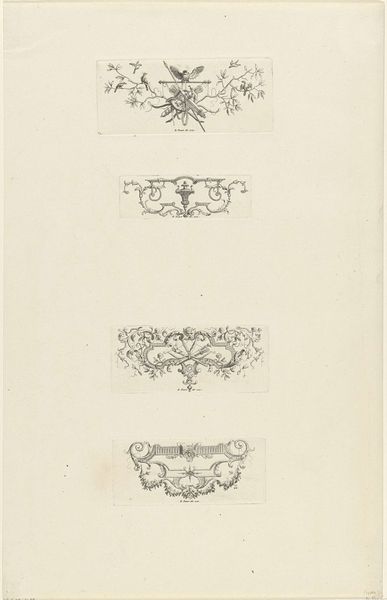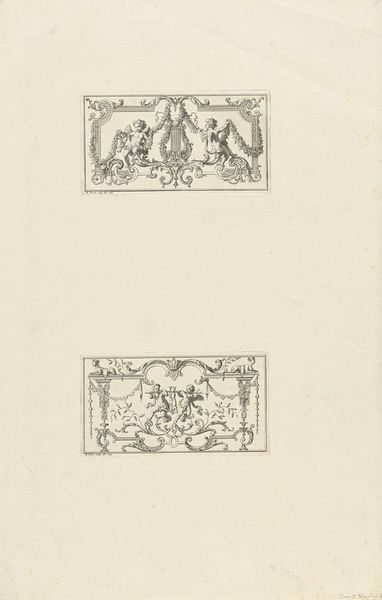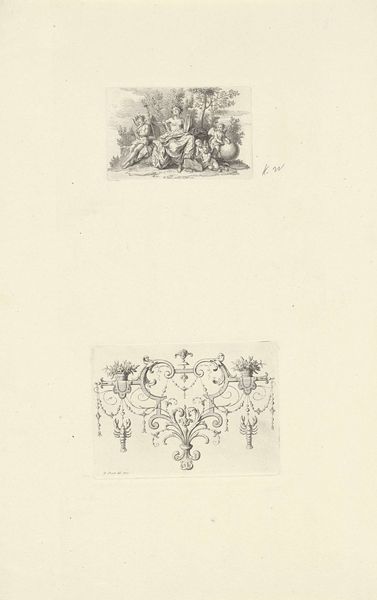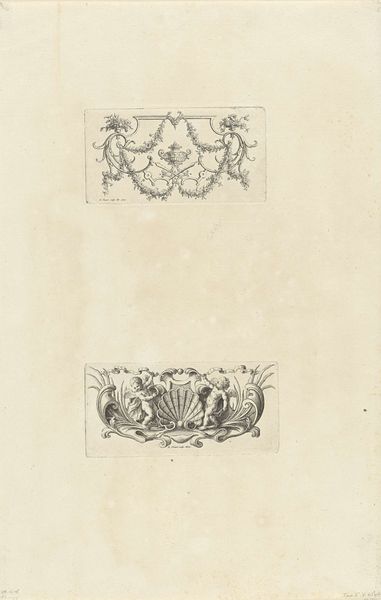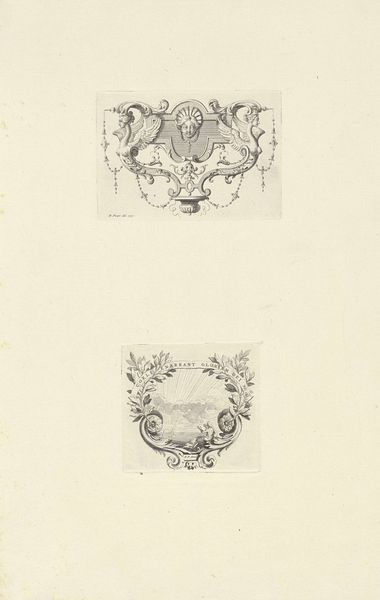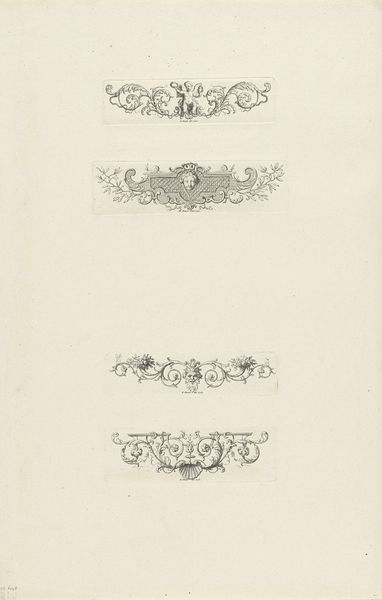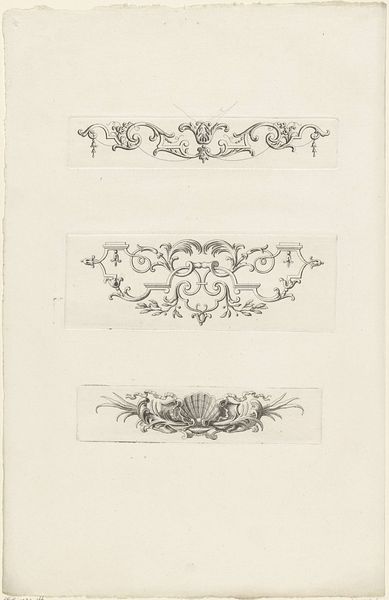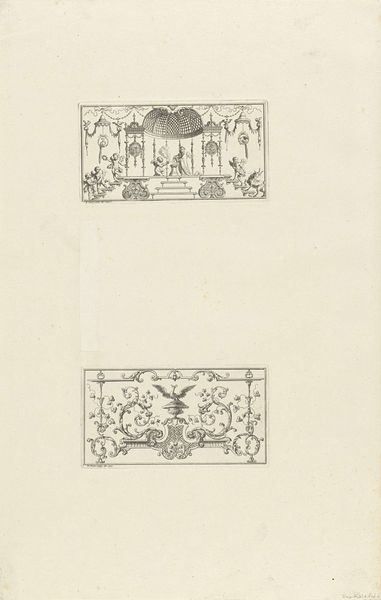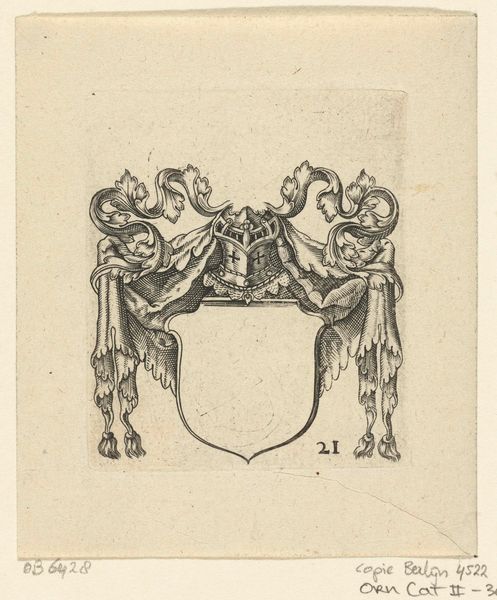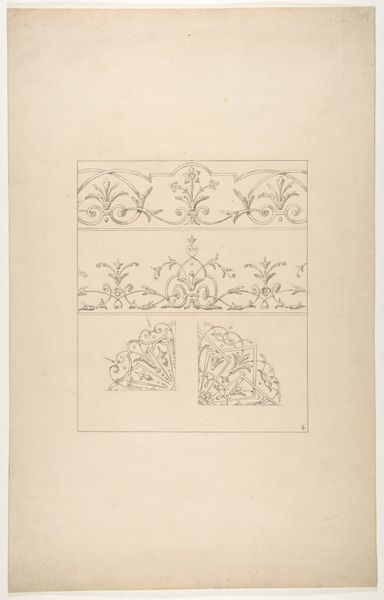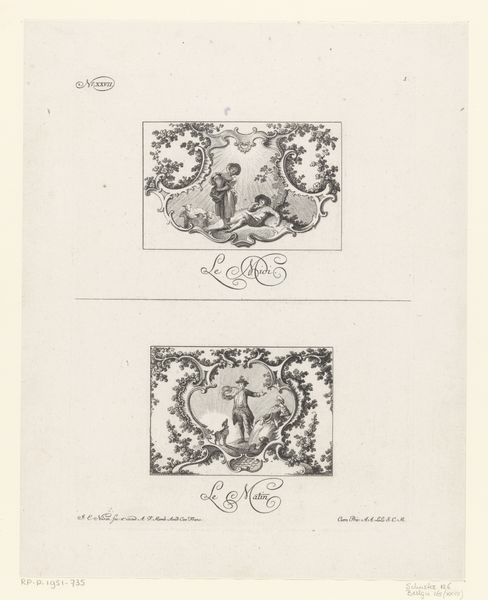
ornament, print, engraving
#
ornament
#
baroque
# print
#
form
#
line
#
history-painting
#
engraving
Dimensions: height 404 mm, width 266 mm
Copyright: Rijks Museum: Open Domain
Editor: Here we have Bernard Picart’s 1728 engraving, “Ornament met zeisen en buste / Vignet met duiven op globe,” residing here at the Rijksmuseum. What strikes me most is the dichotomy: the upper image evokes a sense of classical elegance, while the lower one is quite unsettling, with what appear to be scythes flanking a bust. What's your read on this curious pairing? Curator: Ah, yes! It's quite the visual head-scratcher, isn't it? It’s Baroque ornament at its finest, playful but deeply serious. Forget merely ‘decorative’ – this print practically vibrates with the tensions of its time. I imagine Picart chuckling as he drew those details… are they really so unsettling or simply, perhaps, wonderfully dramatic? What does ‘unsettling’ even mean in the context of Baroque theatrics? Editor: I suppose, "unsettling" might be too strong. But, scythes traditionally symbolize death. Doesn't that juxtaposition – life and death – carry some heavy significance? Curator: Precisely! And doves on a globe symbolize peace, aspiration. Here is the brilliance: Baroque artists often explored duality, that glorious, messy dance between earthly pleasures and spiritual reflections. Think of it as a 18th-century mood board; all those details – are there crossed military banners under the scythes? Editor: Yes, it looks like it. Curator: ...suggesting fleeting glory, perhaps? The bust, almost certainly of a historical or mythological figure, reminds us of legacy. So what story might the artist be trying to suggest by presenting two contrasting but, ultimately, similar scenes? The line work gives a certain frenetic character that lends itself well to history-painting and perhaps making a commentary on it? What do *you* make of the piece as a whole? Editor: I guess, it's more about the cycle – the beauty and the decay, intertwined. So, it's a reminder of human ambition and how everything, eventually, fades. Thanks for the fresh look! Curator: My pleasure. Maybe art can be an argument in favour of constant rebirth, *memento mori* but make it *fashion*, if you will.
Comments
No comments
Be the first to comment and join the conversation on the ultimate creative platform.
